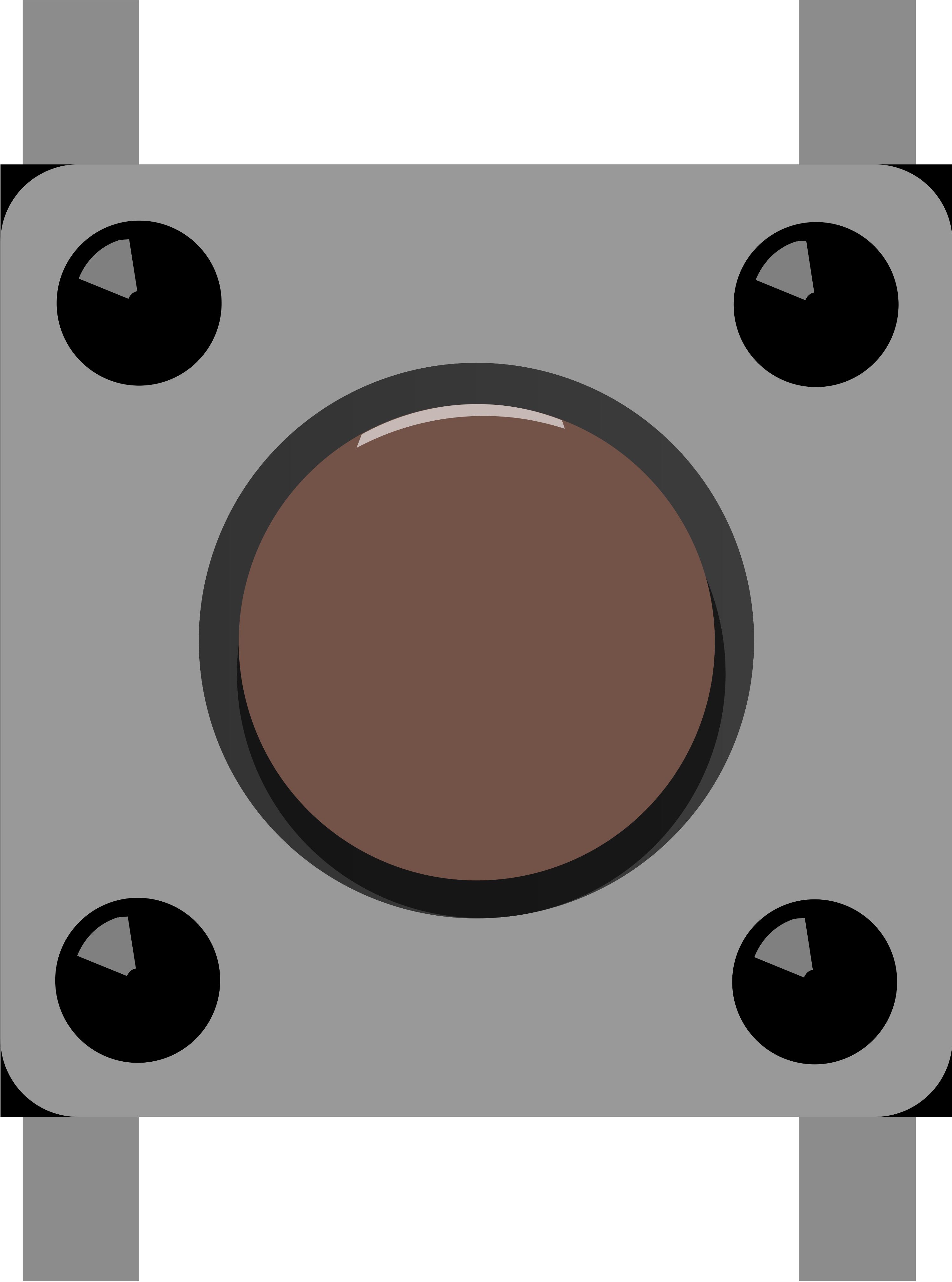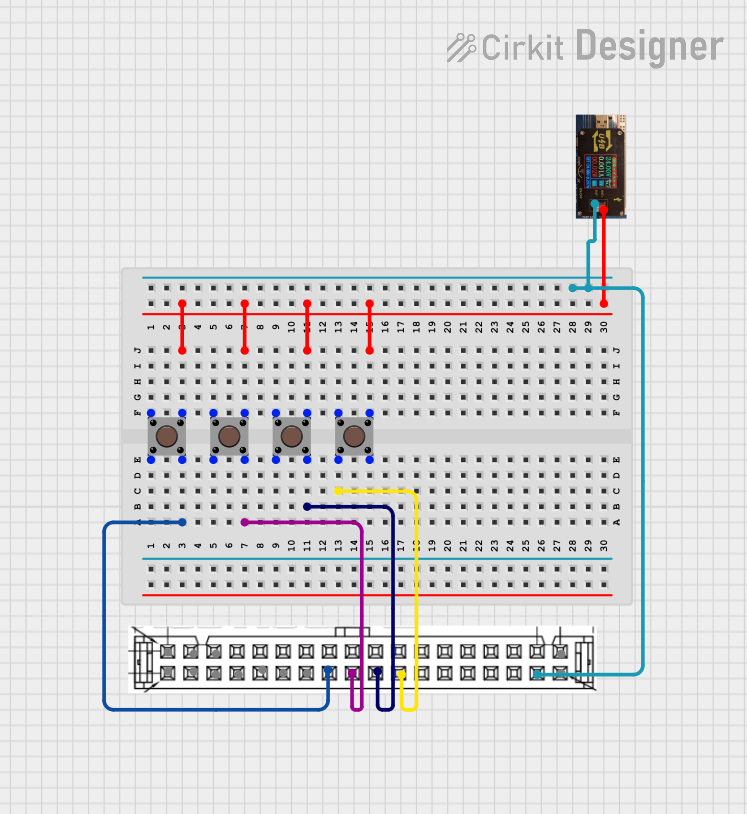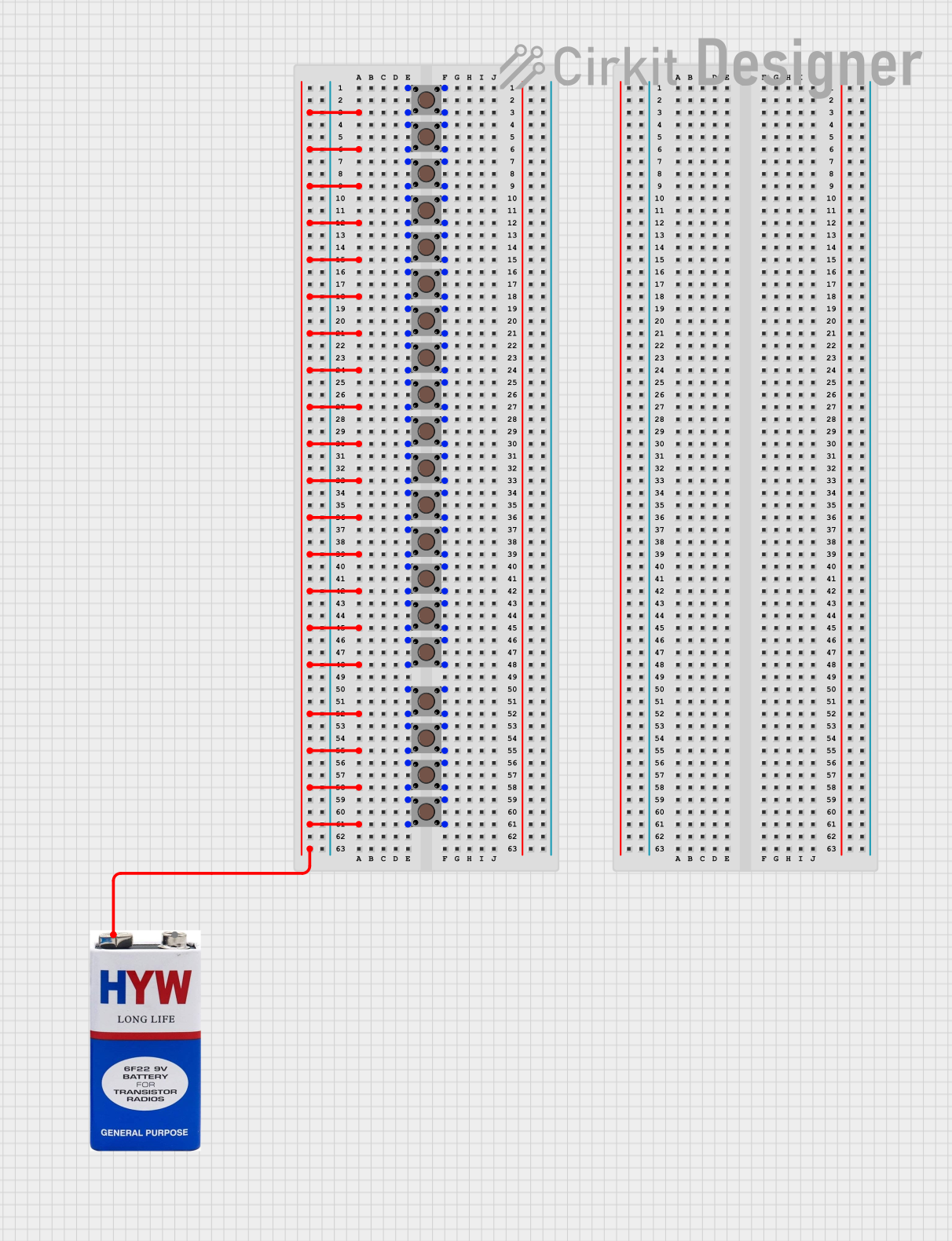
How to Use Pushbutton: Examples, Pinouts, and Specs

 Design with Pushbutton in Cirkit Designer
Design with Pushbutton in Cirkit DesignerIntroduction
A pushbutton is a momentary switch that completes a circuit when pressed and breaks the circuit when released. It is a simple yet essential component in electronics, commonly used for user input in devices such as calculators, remote controls, and microcontroller-based projects. Pushbuttons are available in various sizes and designs, making them versatile for a wide range of applications.
Explore Projects Built with Pushbutton

 Open Project in Cirkit Designer
Open Project in Cirkit Designer
 Open Project in Cirkit Designer
Open Project in Cirkit Designer
 Open Project in Cirkit Designer
Open Project in Cirkit Designer
 Open Project in Cirkit Designer
Open Project in Cirkit DesignerExplore Projects Built with Pushbutton

 Open Project in Cirkit Designer
Open Project in Cirkit Designer
 Open Project in Cirkit Designer
Open Project in Cirkit Designer
 Open Project in Cirkit Designer
Open Project in Cirkit Designer
 Open Project in Cirkit Designer
Open Project in Cirkit DesignerCommon Applications and Use Cases
- User input for microcontroller projects (e.g., Arduino, Raspberry Pi)
- Reset or power buttons in electronic devices
- Control panels for industrial equipment
- Keyboards and gaming controllers
- Doorbells and alarm systems
Technical Specifications
Below are the general technical specifications for a standard pushbutton:
| Parameter | Value |
|---|---|
| Operating Voltage | 3.3V to 12V (typical) |
| Maximum Current Rating | 50mA to 500mA (depending on type) |
| Contact Resistance | < 100 mΩ |
| Insulation Resistance | > 100 MΩ |
| Operating Temperature | -20°C to +70°C |
| Mechanical Lifespan | 100,000 to 1,000,000 presses |
Pin Configuration and Descriptions
A standard pushbutton typically has four pins, arranged in two pairs. The pins are internally connected as shown below:
| Pin | Description |
|---|---|
| Pin 1 | Connected to one side of the switch mechanism |
| Pin 2 | Internally connected to Pin 1 |
| Pin 3 | Connected to the other side of the switch mechanism |
| Pin 4 | Internally connected to Pin 3 |
Note: Pins 1 and 2 are electrically connected, as are Pins 3 and 4. This allows the pushbutton to be used in either orientation.
Usage Instructions
How to Use the Pushbutton in a Circuit
Connect the Pushbutton:
- Identify the two pairs of internally connected pins (Pins 1 & 2, and Pins 3 & 4).
- Connect one pair to the input signal (e.g., a microcontroller pin) and the other pair to ground or a pull-up resistor.
Use a Pull-Up or Pull-Down Resistor:
- To ensure a stable signal, use a pull-up resistor (e.g., 10kΩ) to connect the input pin to the supply voltage (Vcc).
- Alternatively, use a pull-down resistor to connect the input pin to ground.
Debounce the Signal:
- Pushbuttons can produce noise or "bouncing" when pressed or released. Use a hardware capacitor (e.g., 0.1µF) or software debounce logic to filter out these unwanted signals.
Example Circuit with Arduino UNO
Below is an example of how to connect and use a pushbutton with an Arduino UNO:
Circuit Diagram
- Connect one side of the pushbutton to digital pin 2 on the Arduino.
- Connect the other side of the pushbutton to ground.
- Use a 10kΩ pull-up resistor between digital pin 2 and Vcc.
Arduino Code
// Pushbutton Example with Arduino UNO
// This code reads the state of a pushbutton and turns on an LED when pressed.
const int buttonPin = 2; // Pin connected to the pushbutton
const int ledPin = 13; // Pin connected to the onboard LED
void setup() {
pinMode(buttonPin, INPUT_PULLUP); // Set button pin as input with internal pull-up
pinMode(ledPin, OUTPUT); // Set LED pin as output
}
void loop() {
int buttonState = digitalRead(buttonPin); // Read the button state
if (buttonState == LOW) { // Button is pressed (LOW due to pull-up resistor)
digitalWrite(ledPin, HIGH); // Turn on the LED
} else {
digitalWrite(ledPin, LOW); // Turn off the LED
}
}
Important Considerations and Best Practices
- Always use a pull-up or pull-down resistor to avoid floating input signals.
- For high-speed circuits, consider using a hardware debounce circuit or software debounce logic.
- Ensure the pushbutton's current and voltage ratings match your circuit requirements.
- Avoid excessive force or repeated pressing beyond the rated mechanical lifespan.
Troubleshooting and FAQs
Common Issues and Solutions
Pushbutton Not Responding:
- Cause: Incorrect wiring or loose connections.
- Solution: Double-check the wiring and ensure all connections are secure.
Unstable or Flickering Output:
- Cause: Signal bouncing due to mechanical noise.
- Solution: Add a debounce circuit (e.g., capacitor) or implement software debounce logic.
Pushbutton Works Intermittently:
- Cause: Worn-out or damaged pushbutton.
- Solution: Replace the pushbutton with a new one.
Microcontroller Pin Reads Incorrect State:
- Cause: Missing pull-up or pull-down resistor.
- Solution: Add a pull-up or pull-down resistor to stabilize the input signal.
FAQs
Q: Can I use a pushbutton without a pull-up or pull-down resistor?
A: It is not recommended, as the input pin may float and produce unreliable results. Use a pull-up or pull-down resistor to ensure a stable signal.
Q: How do I debounce a pushbutton in software?
A: You can use a delay or a timer to ignore rapid changes in the button state. For example, wait 50ms after detecting a button press before checking the state again.
Q: Can I use a pushbutton with high-current devices?
A: Standard pushbuttons are not designed for high-current applications. Use a relay or transistor to control high-current devices.
Q: What is the difference between a pushbutton and a toggle switch?
A: A pushbutton is momentary (only active while pressed), whereas a toggle switch maintains its state until toggled again.